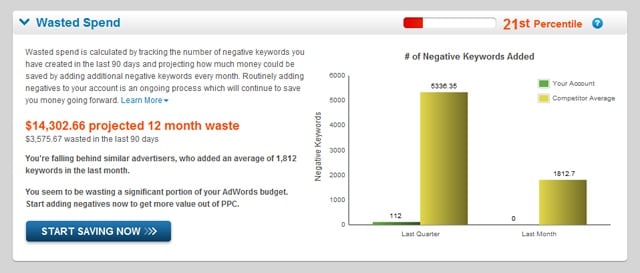Many marketers place a great deal of time and money into proper AdWords campaign organization, careful keyword selection and prudent daily budget management, but then quickly recognize that if too much time is spent on pay-per-click marketing, there will soon be no business to market. The answer for large companies is to hire a full-time in-house search engine marketing manager and analytics team, but what is a small business to do? Well, now there’s a tool for that.
Larry Kim worked as an SEO consultant for 10 years and ran a Google AdWords assessment with each client encounter. “’How am I doing? Could I be doing better?’ is everyone’s first question,” Kim says. Although Kim charged up to $1,500 per assessment, his greater vision was to make these same services available to businesses of all sizes. Kim soon founded Wordstream, a site that helps small to medium-sized companies leverage the power of search engine marketing in order to drive traffic and acquire customers. Kim and Wordstream have stayed true to their word with the creation of the Free AdWords Performance Grader.
The grader assesses individual Google AdWords accounts and provides an instant report card. Each account is evaluated against Google AdWords' best practices and compared to similar companies that have previously used the Free AdWords Performance Grader.
While there are attempts throughout the site to upsell the user on paid services, there is plenty of benefit from the free tool alone. Below are five of the biggest takeaways from the report's findings.
1. Account diagnostics. The Account Diagnostics section provides a general performance overview of your AdWords account, number of campaigns, conversions, average monthly spend and active keywords and click activity in the last ninety days. While an extremely diligent AdWords user may have this data off-hand, time can be saved with this automated audit.
2. Wasted spend. If you have not yet utilized negative keywords, you will be immediately motivated to dive in once you take a peek at your Wasted Spend. While just an estimation, this tool provides you with a general idea of how much money you could be saving if only you incorporated some (or more) negative keywords into your PPC campaigns.

3. Account activity. While you may tell people you log in daily, the moment of truth comes when you check the Account Activity feature. Though no actionable tips are suggested to improve your campaigns, this feature serves as a babysitter, holding you accountable for all of those days last month when you neglected your account.
4. Long-tail keyword optimization. Long-tail keywords cost less per click than other, more general keywords, and they drive higher conversions. But few small business owners use them to their full potential. The Long-Tail Keyword Optimization feature notifies you when your keywords are too broad and encourages you to refine them, which will usually result in a higher click-through rate at a lower price point and an increased ROI.
5. PPC best practices. In school, some of the easiest classes were pass/fail—the PPC report card does that, too. But it also offers a number of Google's best practices that can be hard to monitor and easy to forget. For example, Kim says, one-third of the businesses graded don't use geo-targeted ads, resulting in ads served to the wrong audience and more wasted money.

The PPC Best Practices feature provides a quick checklist that allows you to ignore the green thumbs (or pat yourself on the back) and really focus on the red ones. Network (search vs. display), geography, language and conversion tracking are all important AdWords features that are worthy of exploration, as are ad extensions, running multiple ads, negative keywords and A/B testing.
Is there another tool you use to stay ahead on your PPC marketing?


